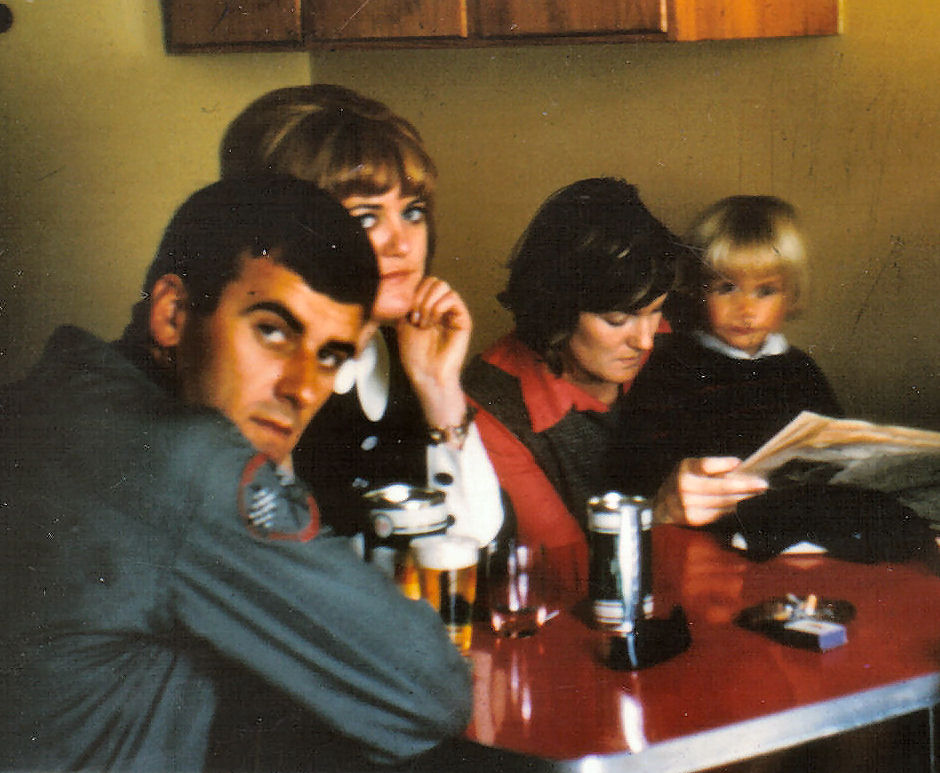|
Radschool Association Magazine - Vol 35 Page 5 |
|
Privacy Policy | Editorial Policy | Join the Association | List of Members | Contact us | Index | Links | Print this page |
|
|
|
1978 Darwin Cricket Team
Pygmy McAndrew found this old photo at the bottom of his tin trunk and sent it to us. He says this was the winning team which played against a combined Army/Navy team and a lot of the blokes were base radio. Pygmy says that back then, base radio seemed to be able to beat most teams on the base, in just about any sport. (Probably because being groundies, they had nothing else to do – tb)
|
|
|
|
Back Row L-R: Ron Muller, Bob Hend (box packer), Brian Alexander (box packer), Jesse James, Tass Massie (radio), John McGrath (radio), Ken Lollback Front Row L-R: Wayne Silverman (box packer), Alf Valentine (radio), John Edwards, Peter Bunt, Peter Cochrane, Pygmy McAndrew (radio).
Airman's Mess, Darwin. 1965. |
|
|
|
|
|
18 Appy days and beyond.
Randall Kingsley was on 18 Appy which
passed out of Laverton on the 17 August, 1967. He’s
(Click on the photo at right for the full booklet.)
He also sent us a copy of the letter
addressed to his parents and signed by Sqn Ldr J.G. Mierisch,
telling them that their young, impressionable son had been accepted
for a career in the RAAF and assuring them that the lad would be
well looked after. The letter describes the conditions of acceptance
and sets out the leave and pay he will receive. Back then, in 1964,
a first year Appy was paid the princely sum of £9.5.8 ($18.57) a
fortnight.
(Click the pic for a copy of the full letter.)
Randall Says: “Finally, in January 1964 at 16 years of age, my chance to get out of country town life was becoming a reality. I believed that I was about to gain a useful trade. Despite contrary school counselling advice, I rationalised that the 15 years that my parents and I had signed up for was not a bad deal and after all, 15 years wasn’t all that long. I would only be 31 when discharge would be a possibility and I had not given any thought of what joining the Australian war machine might really entail. For me it was all about getting out a town of limited opportunities and getting a better education along the way.
Even though I was a bit peeved that
the RAAF recruiters had ignored my preferences to go to Wagga for
armament training, I readily accepted radio training at Laverton,
wherever that was. Up until then I had taken no interest in radio
but a couple of my father's acquaintances had said that this would
be a good trade to get into. So I went up to Brisbane for final
checks,
Geoff Lydeamore, Stu Rushton. (Click pic for bigger view.)
Two overnight train trips later we
were met at Spencer St station by somebody called Corporal. Then we
were on the bus and straight out of the big city to Laverton and the
middle of nowhere. There we were lined up, introduced to our new hut
leaders (Graeme Dennes in my case) and despatched to our homes in
huts 386, 387 and 419. Creatively, most of us were roomed in
alphabetical order. I can almost recall even now most of my hut:....Gilvarry,
Hite, Jackson, Jones, Kingsley, Ledingham, Lydeamore, Norris,
First little doubts about the effects of radio enters my tender 16 year old head.
But immediately a heap of new rules and a range of personalities descended on us and survival techniques stared rapidly developing. How cheap were those coat hangers Rod Edwards was selling me? I bought a great training aid transistor radio from Barry Allan on credit and gradually the lobotomy was taking effect. The RAAF duly kept its promise to remove all vestiges of personality, former life and interests. We had little money, limited leave (always under threat of loss), no car, my civvy clothes were sent home and we enjoyed plenty of marching and all that rubbish. In time, most of us were given the chance to jog through the fog from Appy Squadron to CPE and back before breakfast from time to time reacting to the bellowing of our wonderful DI mentors.
In this boarding school type of environment, one needed a bit of an edge if one was to avoid those new heavies on 17 course (chiefly Wren, Drummond and Robertson in my case) who lived just over the other side of the footpath. As ever, sport was a bit of a ticket out at some level and I made the Saturday cricket team in just a week or two. That gave me at least a back seat in the recreation room from time to time to watch sport programs on Sundays without being detailed off for a canteen run. But the all-powerful (and occasionally protective) 16 course were living a bit further away in tin city and had other priorities so generally we were very much at the mercy of our new 17 course masters. The first target was to get past Easter and Ocean Grove with the inevitable walking attempt to make Tasmania.
Apprentice attrition rates meant that some sprog appies got to travel to RMIT on the 17 course bus and so I luckily managed to draw one of the short straws. This meant the occasional test of patience and endurance from the 17 course gods but these trials left no lasting scars, no lasting scars, no lasting.....
My high school teachers had encouraged me to stick with French rather than taking any more woodwork or metal work courses so basic fitting and turning was never going to be a strong point with me. Along with half a dozen others, I incurred the wrath of some old codger (Chisel Chandler as I recall) and bombed out after filing away for a few months), It took 12 months of evening classes to get back above the academic line.
By the start of year two, I had sort of found my place in the scheme of things. I bullied my way to a back seat window place on the bus, I occasionally had a 19 course victim so that appy indoctrination processes could be passed on and I steadily worked through my RMIT classes on networks, antennas, navigation aids and communications. With some help from Roy Thompson, my trade drawing skills jumped from struggling smudges to quite wonderful works of art and a good pass.
The monthly Radschool parades were a pain, especially in winter, but having to go to RMIT meant exposure to the full RAAF monty was limited. Sport, especially Rugby, was one of my safety valves. Our Appy Sqn officers were not that keen on having Aussie Rules on the sports agenda despite angst expressed by our Victorians. I have been ever thankful that DI Cpl Cooper did the right thing from time to time by taking Kev Davis and myself along to a few Collingwood games thus cementing a lifelong love for one of the best sporting teams on the planet. (WHAT??? Chuck, spew vomit – tb)
Laverton had its moments. I recall liking the airshows and there were some interesting personalities around the place. I especially recall one Henry? Parker from the ground defence world who, with his dog, was still keeping the huns at bay and introducing one to the pleasures of gas attacks and the like. I have never quite figured out what motivated blokes like him.
Year three duly arrived and those left on the course started the Radschool phase. I can recall some parts of this phase: Quadradar (Cliff Collett?), CADF (Bruce Waghorn when he was not having a bet), AT20/26 transmitters (one of the dutchy Hollands going around), ATC radios, IFF, test equipment but forget what else we covered here. Al Shanley was the only groundy and one of the few of the course to get through the trade tests first go but after sailing through the re-test, we were set to graduate. As usual I has finished in the middle of the pack.
By August 1966 just 32 remained of
the 48 who actually turned up at recruiting at the start of
Not sure what I thought was going to happen, (I had naively planned to spend a day or so around Melbourne with my parents before heading off to wherever I was posted) but we eventually had our orders on the Thursday. I was asked to be in Sydney before noon Friday. A mad rush of clearances later and I was back on the wonderful overnight train system heading north to a new life at 1 CARU Brookvale as a soon-to-be radar expert.
I remember the pride swelling in my heart on arrival at the Ops site as I was told I was somewhat unexpected and that there was no room at the inn for single airmen at the domestic site. Still with no money, no car, no bed but plenty of new friends in the workshop, what was my problem? “Come back Monday morning and everything will be sorted” they said. I really liked sleeping in the drying room at the domestic site Sunday night before heading off Monday to spend a month or so living in a guest house at Manly.
But I soon found a fine group of ready mentors including Tom Wells, Joe Ross, John Rice, Barry Spencer, Bob Allum, 17 course graduates Grahame Trezise and Mick Nicholls, WO Jones and Salty Burns. Keeping a week-day only watchful and protective eye over Sydney was a highly useful role I learnt.
Not many pay days later, I had the first car. Pub life around Manly/Dee Why was active enough, (the old Canopis Room at the Manly Pacific was oft visited – tb) beaches were handy, I played cricket with the unit team in a local competition so Radschool soon disappeared into the dim past, just as country NSW had disappeared in 1964. I liked the shift work. My main focus was on the IFF and crawling around in the darkened Ops room adjusting display systems but I thought I was beginning to get a feel for “heavy” radar systems in general.
Life changed again at the start of
1967 as I was asked if I could find time to head off to Biloxi,
Mississippi for a few months of training on something called the
AN/CPN-4. I agreed to go, even
Alan Shanley, Randall Kingsley, Ron Ledingham
There were 10 of us at Biloxi; Wally Meriton, Ray Noack, Trevor Longmore, Gerry Linehan, Warren Magnay, Al Shanley, Mick Cottrell, Ron Ledingham, Graeme Coutts and myself, an even split of airmen entry and appy Radschool graduates. 1967 was an interesting time to be in the deep south of the USA. Us ex-appies had no car or ability to hire one so we quickly adjusted to greyhound bus travel and the segregation, especially in Mississippi and Alabama. We were not encouraged to do our usual thing and sit five abreast at the back of the bus on our trips into New Orleans. Keesler was run along shift lines over an 18 hour day and our instruction ran from mid day to 6 pm. We did not enjoy living on base that much so the ex-appy brigade found an apartment along the Gulf Coast. Three months of training later and I was back at Brookvale and waiting for the posting system to sort itself out and find me a CPN-4 to work on.
I soon met up with fellow Keesler graduates Al Shanley and Trevor Longmore at Williamtown and then commenced work with Sgt Kev Hall and began to settle into a new routine. Fortunately I had never experienced such pleasures as guard duty and rooming with 3 cooks assistants had its moments. I was not that happy with some of the direction I was taking here and there are just so many times you can front the ASCO bar after work or drift into Newcastle and the greek clubs there. There seemed to be an awful lot of others my age around the base (like pilots) who lived a little better and so it was not long before I felt that my own world could be bigger too. By the end of the year I was in my car and heading back south to Melbourne again, to RMIT again and having a shot at engineering. Even if it meant more forced study, living in a boarding school environment and a return to an even more regimented life than I was enduring.
Meanwhile, out in the real world changes in political and military life were well underway. Only one of my old high school class mates had fallen foul of the dreaded conscription marble that I would have been eligible for. As it happened I met the poor bugger on opposite sides of the pitch playing interservice Rugby against Army at Point Cook in 1968. I was pleased to see the end of that system when Whitlam arrived in 1972.
I did not have the guts to throw
myself in front of the springboks as an RMIT student in 1971
although I had sympathy for their cause. And we duly followed the
political decline of the Libs as
At Frognall, one of my fellow 18 Appy course mates Trevor Norris, who lasted in the field even less than I did, was about to engineer his way out for a new life with Ansett and ex 17 course Terry Crews had left Frognall and the RAAF before I arrived there. For me, and following the considerable success of the lobotomy at Radschool, I was determined to put just one foot in front of the other, keep my head down to get through and then get back out into the system as an engineer one day. But then that, as they say, is another story.
|
|
|
|
Statistically, 6 out of 7 dwarfs are not happy.
|
|
|
|
Frognall.
Recently, without being coerced or threatened in any way and of our own free will, we ventured south of the Tweed and made our way to Melbourne and having heard a lot about but never been to or seen this Frognall place, we thought we should go and have a look at it.
For those that, like us, don’t (or didn’t) know where Frognall is situated, it is in one of Melbourne’s eastern suburbs called Canterbury which is a suburb well known for its leafy boulevards and large, ornate houses. Being one of Melbourne's most expensive and exclusive suburbs – it was a fitting place for the RAAF.
To get to it, you find your way to Burke Rd, which starts down near Hobart somewhere and finishes just south of Darwin, follow Burke Rd until the intersection with Mont Albert Rd, turn west into Mont Albert Rd and you’re there.
Frognall was built in 1889 on just over 7 acres of prime land and due to the bank collapse and depression of the early 1890s, had a succession of owners until, in 1942, at the height of WWII, the RAAF leased the property from the current owners and set up the Melbourne Wireless Telegraphy Shadow Signal Station. In 1943, the Commonwealth Government bought the property and the RAAF settled in. It continued to be used as a Telecommunications Unit until 1976. In Dec 1947 the Radio Apprentice School was set up and the first brats arrived in early 1948. It was the home of the radio apprentices until 1961, when they moved to Laverton to become part of the RAAF School of Radio. Diploma Cadet Squadron or School of Radio Detachment A, as it was known then, began at Frognall in 1961.
In 1984 it was sold to the City of Camberwell, who subsequently sold it for use as a private residence. In 1993 the owners sold off the rear half of the property for subdivision but kept the main section of the property, including the magnificent house, the decorative garden and drive in the same form as they were laid out many years ago.
We don’t know what it was like in its working life, but in retirement, it is magnificent – we only wish we could have had a look over it.
|
|
|
|
|
|
Today, this is the imposing entrance and driveway to “Frognall”, on Mont Albert Road. |
|
|
|
|
|
We asked Laurie Lindsay, who was at Frognall in the late 1960’s, learning radio stuff and training to be a Sir, and RG Thompson who was a worker there, not a guest, if they had any old photos and they dug around in their trunks and found these. Laurie asked his mate Wally Nelowkin who had some pics, and here they are. This is how the front entrance and gate used to be.
|
|
|
|
|
|
Frognall Place. This street and its houses are on part of the rear (southern) section of the property that was subdivided in 1993. (Click pic for bigger view.) |
|
|
|
|
|
|
|
|
|
And this (below) is what used to be there before it was subdivided. This photo was taken from the tower of the main building in 1971, and looks south over where Frognall Place is now. (Click the pic for a clearer view)
|
|
This photo is of the area in the photo above, after the RAAF had moved out and before the developers had moved in. The roadway below became Frognall Place. |
|
|
|
|
|
This street below, known as “The Ridge”, which is on the eastern side of the property, overlooks where the Parade Ground used to be. (Click the pic for a Google Maps aerial view.) |
|
Click HERE for copies of press releases used during the sale of the property. |
|
At a meeting of the AARP (American Association of Retired People) they showed this video which was submitted in a contest by a 20 year old. The contest was titled - "u @ 50".
This video won second place. After they showed it, everyone in the room was awe-struck and broke into spontaneous applause.
So simple and yet so brilliant. Take a minute and watch it. Click HERE |
|
41 RTC
41 RTC passed out of Laverton on the 18 August, 1967 and had their break up party at the Altona Central Hotel.
|
|
|
|
|
|
|
|
|
|
|
|
|
|
Time to Name Names !!!
A concerned reader, who feels he was severely wronged many moons ago, gave us the following two photos and in order to protect his identity, we’ll keep his name a undisclosed secret and will only divulge it if and when you donate 3 cans of VB to a charity of our choice.
The two photos were taken in 1965 at the photo provider’s (the PP) private home in Canterbury, a suburb of Melbourne and are of two lads who feature in our pages from time to time.
On numerous occasions, the good natured and hospitable PP made his humble abode readily available to these dastardly rascals for them to pursue their amorous adventures, only to find they had abused his hospitality and trust and regularly and stealthily made off with goods rightfully belonging to the PP.
This photo below shows one of these
rascals, a very young Edward George McEvoy, as well as
We’ll just call her Margaret.
Note the blue cardigan worn by Edward G McEvoy and more importantly, note the size of those pockets in the said cardigan.
The PP is certain that Edward G regularly left the PP’s abode with those large pockets surreptitiously stuffed full with most of the PP’s private hoard of iced VoVo’s.
The second photo is of Richard (Dick) “Ringo” Carlson who was seated at the PP’s contemporary Namco dining suite and who looks suspiciously guilty after he’d helped himself to one of the PP’s 6 matching un-cracked vegemite jars, which were a treasured wedding present from the PP’s mother in law and which were openly and proudly displayed in the sideboard in the back sun-room. Ringo can be clearly seen secretly scoffing several of the PP’s beers which would have been stored and chilled in the Silent Knight refrigerator in the hallway. (You can click this one too for a better view)
Once again, to protect the innocent, we won’t mention these very pretty ladies’ names, instead, we’ll just call them Rosalyn and Joan.
The PP feels it is now time for these dastardly rogues to come clean and make restitution for the wrongs he incurred at their hands.
|
|
The Elecos come out to play.
Back in 1966, these three Elecos from 2AD would regularly grab a couple of packet of Rothmans, an esky full of Toohey’s Flag and ice, a tranny to listen to Mad Mel and head for the banks of the Richmond River (under the bridge) to discuss Ohm’s Law. They are:
|
|
|
|
Kev Trimmer, John Boyne, Ray Zieba.
|
|
I was walking in a cemetery this morning and saw a bloke hiding behind a gravestone. "Morning." I said. "No" he replied, "just having a pee." |
|
|
Back Go to page: 1 2 3 4 5 6 7 8 9 10 11 12 13 14 15 16 17 18 19 20 Forward
|

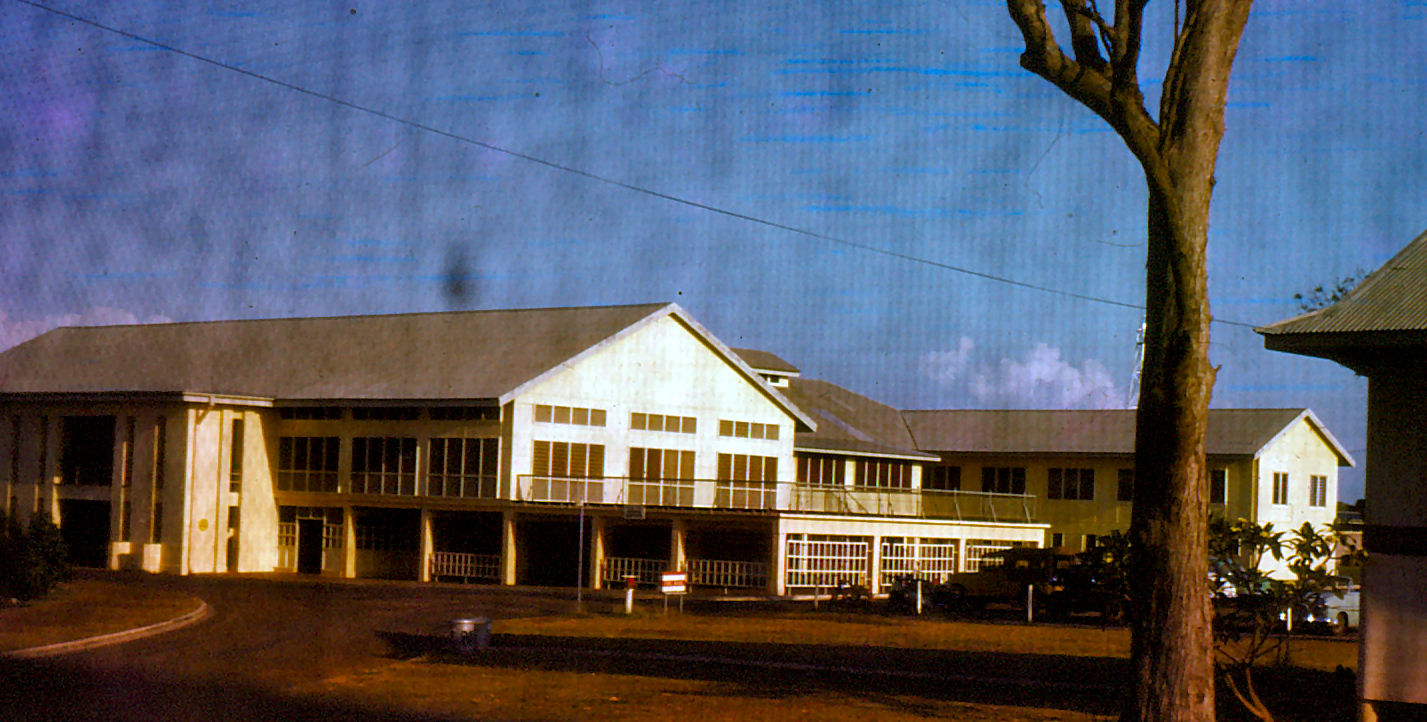
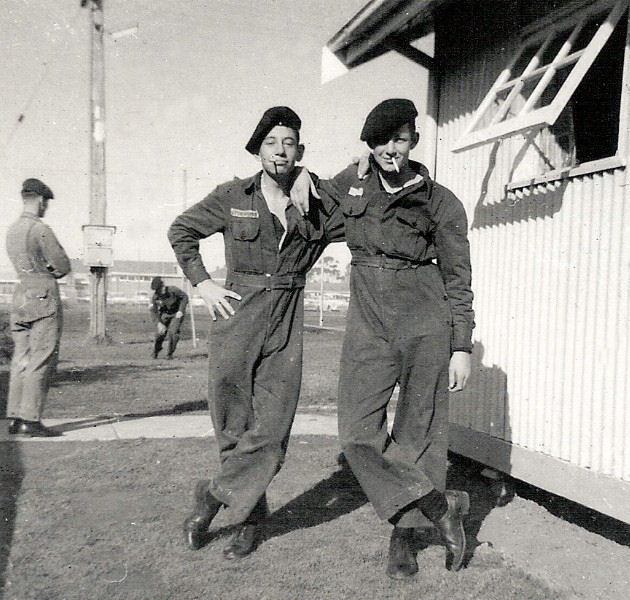
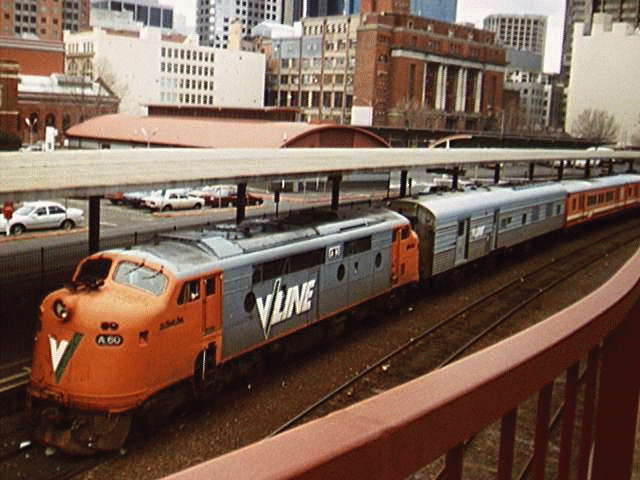
.jpg)
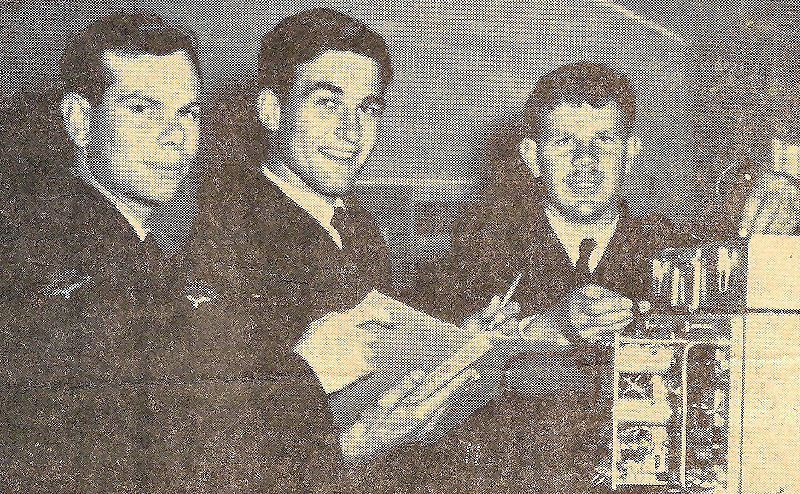
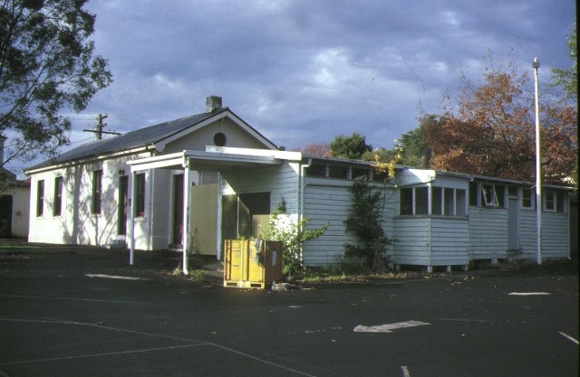 the Vietnam mistake took its course. I remember when Graeme Bond,
Dave Swinnerton and Hans Prins ran against the Minister for Air in
the Federal elections of 1969, although I am still not sure if they
just used the process to get out of the RAAF or if they wanted to
make a point or two along the way.
the Vietnam mistake took its course. I remember when Graeme Bond,
Dave Swinnerton and Hans Prins ran against the Minister for Air in
the Federal elections of 1969, although I am still not sure if they
just used the process to get out of the RAAF or if they wanted to
make a point or two along the way. .jpg)
.jpg)
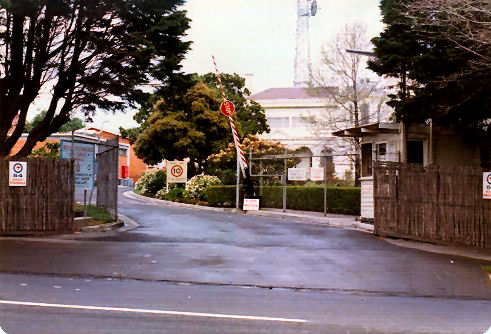
.jpg)
.jpg)

